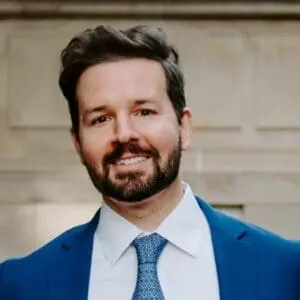There’s no question that today’s porn is a far cry from the heyday of girlie magazines, back-alley strip clubs, and curtained-off rooms in the local video store. With porn accounting for more than one-third of all web traffic, once risqué publications like Playboy have become the equivalent of the horse and buggy. Playboy CEO Scott Flanders summed up this change in an interview with The New York Times last October. “That battle [between paper and digital porn] has been fought and won,” he said. “You’re now one click away from every sex act imaginable for free.”
But is porn’s unprecedented ubiquity and accessibility affecting our mental health? Inside and outside of psychotherapy circles, there’s an increasingly heated debate about the degree to which porn is having harmful effects on our emotions, brains, and sexual performance. In the April issue of Skeptic magazine, psychologist and Stanford professor Philip Zimbardo penned “How Porn Is Messing with Your Manhood,” in which he claims that pornography is negatively affecting young men in particular, who, “hijacked by watching copious amounts of online porn,” now suffer from “sexual anorexia,” in which they struggle to have satisfying sex with a real-life partner. Zimbardo also cites studies that blame pornography for a dramatic increase in conditions such as erectile dysfunction, low sexual desire, and delayed ejaculation. “Some brains on porn are being digitally rewired in a totally new way,” he writes, “to demand change, excitement, and constant stimulation.”
Several days after Zimbardo’s post was published, sex therapist Marty Klein wrote a rebuttal, “Skeptical of the Porn Skeptics,” arguing that while it’s concerning that so many men seem to get their sex education from porn, Zimbardo’s claims aren’t conclusive, nor are they supported by neuroscience. Instead, Klein says, they’re based on a few isolated studies with small sample sizes. Refuting Zimbardo’s claim that “young porn addicts exhibit brain responses that are comparable to [those of] drug addicts,” he adds that many reports that analyze the fMRI scans of porn users mislead those who are easily impressed by neuroscientific hype. According to Klein, the brain lights up in the same observable way whether we’re watching porn, cuddling a grandchild, or witnessing a sunset. “The brain is a reward machine,” he says. “If your brain didn’t light up looking at porn, why would you be looking at it in the first place?”
Even as the debate intensifies about whether porn is a healthy sexual outlet or an erection-killing relationship death knell, consensus on the matter is lacking, both within the mental health field and beyond it. In fact, when the DSM-5 was being crafted in the run-up to its 2013 publication, committee members from the American Psychological Association considered adding a category for “hypersexual disorder,” to include a subdiagnosis for pornography users. But evidence for the necessity of such a classification came up short, and the idea was scrapped. Likewise, the American Academy of Psychiatry has found insufficient evidence to categorize excessive porn use as a mental disorder.
The American Academy of Pediatrics, however, takes a warier stance on porn’s potential impact on young adults. According to David Hill, who chairs the organization’s Council on Communications and Media, the group recommends that parents keep screens out of their children’s bedrooms, lest they use them secretly to access porn. “We encourage parents to co-view TV and movies with kids to give perspective,” he said in an Atlantic interview earlier this year, claiming that most mainstream television and film encourages risky behavior. Other findings straddle the fence on declaring whether porn is a cultural boon or bane. A 2013 study by researchers at Brigham Young University and the University of Missouri published in the Journal of Sex Research surveyed married, cohabitating, heterosexual couples on the quality of their sex amid porn usage. What they found was that both partners reported a lower quality of sex when porn was used solely by the man—who showed lower self-esteem and libido thereafter—but the quality of sex reportedly improved when it was used by the woman.
Recently, the porn debate has gained momentum in the mainstream media as well as in the political realm. In March, The New York Times ran an op-ed titled “When Did Porn Become Sex Ed?” portraying college students as accepting porn as a type of sexual instruction manual. “There’s a lot of problems with porn,” says a 21-year-old college senior interviewed in the piece, “but it is kind of nice to be able to use it to gain some knowledge of sex.” Echoing the concerns raised in Zimbardo’s Skeptic article, the April issue of Time ran a cover story on the work of several former avid porn users—all young men in their 20s and 30s—who now lead grassroots organizations raising awareness of how porn tarnishes romantic relationships and leads to sharp increases in the incidence of erectile dysfunction. It reported on a growing number of men who relinquished porn after concluding that they’d desensitized their penises to the sensations of real sex. The condition even received its own acronym: PIED (porn-induced erectile dysfunction). And if there was any doubt that some consider modern porn worthy of being called a national problem, Utah governor Gary Herbert signed a resolution in April declaring pornography a “public health hazard” that “perpetuates a sexually toxic environment.” Passages in the bill note porn’s addictive potential, claim it promotes violence and abuse of women and children, and link porn use to “lessening desire in young men to marry, dissatisfaction in marriage, and infidelity.”
So what position should ordinary clinicians take in this debate? Are we really in the midst of a public health crisis? What does good therapy with someone who regularly watches porn look like?
Many leading sex therapists argue that porn and its effects have been woefully understudied, leaving clinicians vulnerable to hearsay, personal bias, and misinformation that risks driving clients from therapy, should they feel judged or misunderstood. According to therapist and sex counselor Ian Kerner, current clinical training in sexuality has been largely based on applying the addiction model to unfamiliar or taboo sexual behavior, as outlined in Patrick Carnes’s 1983 Out of the Shadows: Understanding Sexual Addiction, which made sex addiction a household term. “But frankly,” Kerner adds, “the addiction model is outdated, lacks compassion, and doesn’t provide much in the way of a treatment plan.” There’s a big difference between sex addiction and regular porn consumption, he says, adding, “If I’m treating a 40-year-old man who’s in a relationship where there’s not enough sexual intimacy, and he’s masturbating a lot to pornography, I don’t automatically assume that’s a porn issue.”
Another mistake clinicians make in evaluating the impact of porn, according to Klein, is that they focus on its explicit content, rather than the motivation for viewing it. “Whether it’s a matter of helping a couple negotiate how to discipline a kid, or how to spend money,” he says, “therapists should able to see beyond content and comprehend the psychological dynamics of the couple they’re working with.”
According to psychotherapist Wendy Maltz, however, porn in the pre-internet age was a fringe tool for complementing your sex life. That was before it became a highly addictive runaway pleasure she calls “the high-fructose corn syrup of sexual media” and “a high-octane espresso shot for sexuality.” While porn may not be dangerous in itself, she adds, harm comes from the way it portrays aggression against women. “Maybe it’s just some slapping or calling a woman ‘bitch,’ but this has become a part of mainstream pornography,” she says. “And it’s only becoming more extreme,” she continues, as viewers habituate to it and seek even greater adrenaline-packed sex scenes. Maltz says that while she withholds judgment if couples choose to watch porn to spice up their sex lives, it can be easy for one partner to feel pressured into watching something that makes them uncomfortable. She maintains that “you don’t hear many people proudly say that today’s porn is genuinely enhancing their lives and sexual relationships.”
Some critics go further to argue that porn has absolutely no place in our culture, regardless of its intensity level. “Pornography is founded on human debasement, dehumanization, and cruelty,” says Gail Dines, a professor of sociology and women’s studies at Wheelock College in Boston, who’s written and lectured extensively on the subject. Dines says the vast majority of free online pornography features male-on-female violence and can all too easily spill over into ordinary sexual relationships. To therapists who say much of consensual sex involves a degree of dominance or power play, Dines responds that this is “a patriarchal definition” of sex. She adds that in many instances, porn actresses are coerced into nonconsensual sexual acts out of economic necessity. “All of this needs to be questioned,” she says. “Why are you looking at porn that degrades and debases and hurts? This is what therapists need to be asking, not taking at face value.”
Not everyone accepts the idea that the vast majority of porn is violent. “If you code spanking as violent, or code one women with two men as violent, or two women with one man as violent, then yeah, porn is violent,” says Klein. But he adds that even if the sex in porn seems extreme, most porn consumers recognize that it’s different from what actual sex looks, sounds, and feels like. “Porn is not a documentary,” he says, but an expression of human sexual fantasy, which remains just that—fantasy. “Fantasy doesn’t necessarily reflect desire,” he adds. “People seem to understand the appeal of fantasy in Star Wars, but for some reason they can’t figure it out when it comes to porn.”
Whether porn constitutes a public health crisis remains a subject of debate, but it’s forcing therapists to confront their own biases about what constitutes healthy sexuality more fully, and to become clearer about their therapeutic role. Thus, regardless of how an individual therapist might feel about porn, most clinicians agree that it’s still crucial to refrain from snap judgments, be an empathic listener, and take a thorough assessment of sexual history and habits. If you accept that premise, then most therapists are already equipped to deal with the issue of porn when it arises in sessions, as long as they’re trained in tackling issues like sexual desire, fantasy, anxiety, and shame. “The real question facing therapists today is whether they’re equipped to see an interest in pornography as a legitimate desire,” says Klein. “Everybody’s views deserve respect. If we don’t give the porn consumer a voice, we’re not acknowledging the full spectrum of human sexuality.”
Chris Lyford
Chris Lyford is the Senior Editor at Psychotherapy Networker. Previously, he was assistant director and editor of the The Atlantic Post, where he wrote and edited news pieces on the Middle East and Africa. He also formerly worked at The Washington Post, where he wrote local feature pieces for the Metro, Sports, and Style sections. Contact: clyford@psychnetworker.org.












